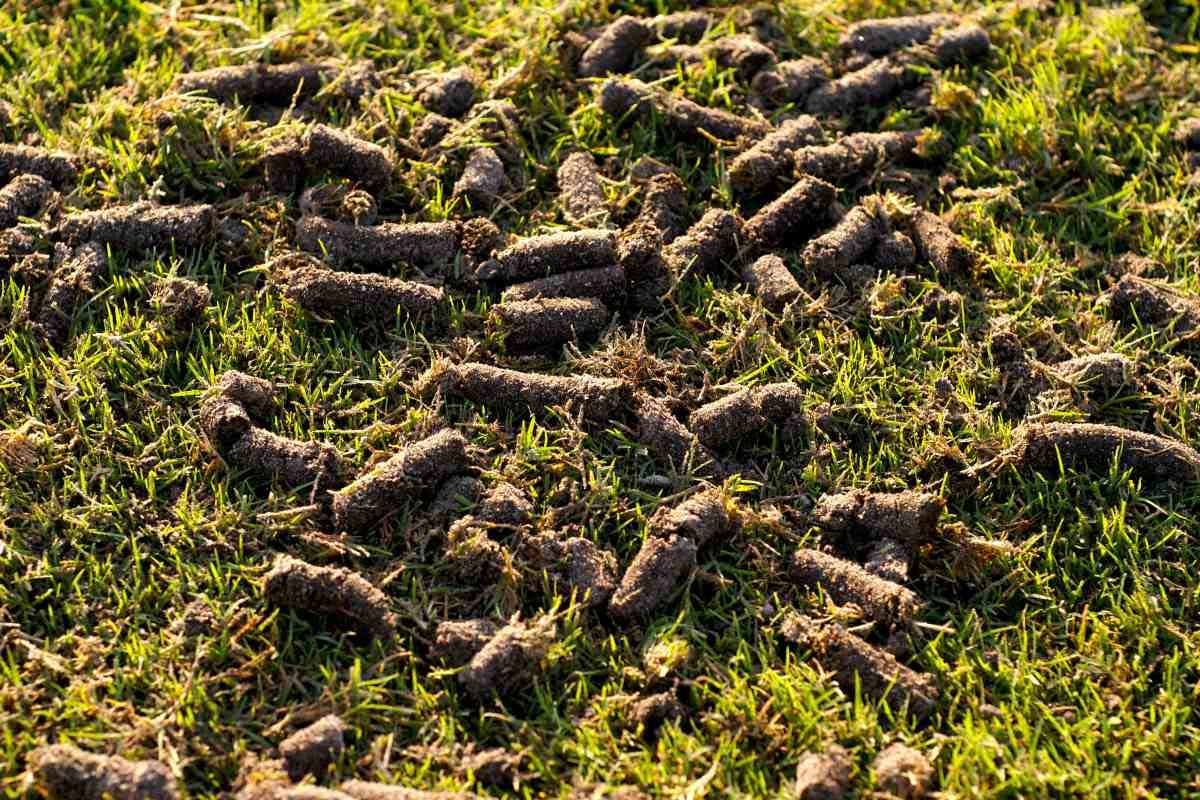Lawn aeration sounds technical, but it’s really about letting your grass breathe again. Fall flips a quiet switch in the South and lawns finally exhale. Fescue, bluegrass, and rye wake up as the heat eases off. Green returns, growth restarts, and you can actually fix things. This is the season to repair, not just maintain.
Read the lawn’s mood
Summer left marks, even if the yard looks fine from the porch. Heat stress pushed cool-season turf to the edge, thinning patches and hardening soil. You see it in the dull color, the tight ground, the tired look after mowing. Weeds got bolder while the grass napped. Now the weather sits in that sweet 60–70° range, and growth kicks back in. That’s your opening to reset the balance weed, dethatch, lime where needed, feed with a steady hand, and open the soil.
Think of the lawn like a chest that’s been held too tight all summer. It wants air, room, and water at the roots. Do a quick compaction check with a screwdriver. If it won’t slide to the handle, the soil’s bound up. That stiffness slows everything roots, microbes, drainage, even seedling survival. Tackle it now while the grass is awake and ready to heal. This is where lawn aeration earns its keep.
Lawn aeration
Punching holes isn’t busywork. It creates small channels that let water and oxygen reach the root zone. Grass responds fast because roots finally get space to expand. Seed loves those pockets, too; the soil-to-seed contact is better, and moisture lingers. Dr. Grady L. Miller at NC State puts it plainly in his outreach: do the work when grass is actively growing. Warm-season lawns get their turn in summer. Cool-season lawns thrive with fall timing, after the worst heat. You’re not just fixing last season. You’re setting up next spring’s show. Imagine each core hole as a tiny reservoir.
Rain and air drop in, roots wander out, and microbes get busy breaking down thatch. If your yard hosts kids, dogs, or weekend games, soil compaction builds fast. Lighter traffic still compacts soil over time mowing alone does plenty. One pass helps; two or three passes help more. Keep the cores on the surface to crumble naturally. They’ll feed the soil as they break apart. That’s the quiet magic behind lawn aeration.
Time it like a pro
Work with the calendar, not against it. Aerate right before you overseed, from early September into mid-October, depending on local warmth. New seedlings want at least six weeks before the first frost. That window lets roots toughen up and ride out winter in good shape. Skipped the timing and already dropped seed? Hold your fire for now. Aerating over fresh sprouts rips them out, and that stings. Come back in early spring for a light pass if you need to, then focus again next fall. If you aren’t overseeding this year, pick a September or October day and go. Moist ground matters.
Wait for a soaking rain or irrigate ahead of time so the tines pull proper cores. Hard, dry clay fights back and leaves shallow marks. You want clean, deep plugs, not scratches. Test an area first and adjust weight or passes. Go slow and overlap slightly for even coverage. Good prep turns lawn aeration from a chore into a win.
Seed, feed, and heal
Aeration pairs beautifully with smart renovation. Right after you pull cores, broadcast quality seed that matches your mix fescue, bluegrass, rye, or a blend. Rake lightly to settle seed into those pockets. Topdress with a thin layer of screened compost if you can; the seedlings will thank you. Use a starter fertilizer with measured phosphorus where it’s allowed and needed. Keep it modest. Too much pushes leaf growth and neglects roots. Water like you mean it light and frequent at first, then taper to deeper, rarer drinks.
Mow once the seedlings reach the right height for their species. Sharp blades only. Dull blades bruise young grass and slow the comeback. If your soil test calls for lime, apply it after seeding, not before. It adjusts pH over months, setting the table for spring. And watch traffic. Give the new stand a break while it stitches in. Each small choice stacks up. Together they amplify the gains from lawn aeration.
How often is enough?
Frequency depends on how your lawn lives. School fields see constant footwork and may need three or four aerations a year. Most yards don’t carry that kind of pounding. Still, normal life mowing, play, deliveries, backyard hangouts adds up. An annual fall pass works well for many cool-season lawns. If the turf is thriving and bounces back fast, you can skip a year and watch. Compacted ground needs a tighter loop. Aim for two rounds one in fall, one in spring until the soil loosens and drainage improves.
Don’t expect miracles from a single session. Each pass typically opens only a small slice of the surface. Stack passes in different directions and you’ll widen that impact. Keep notes on moisture, depth, and recovery. Photos help you see the change you stop noticing. The goal isn’t perfection; it’s steady, durable growth. When spring arrives, color pops sooner, mowing feels cleaner, and the lawn holds up under feet. That payoff traces back to steady, thoughtful lawn aeration.
